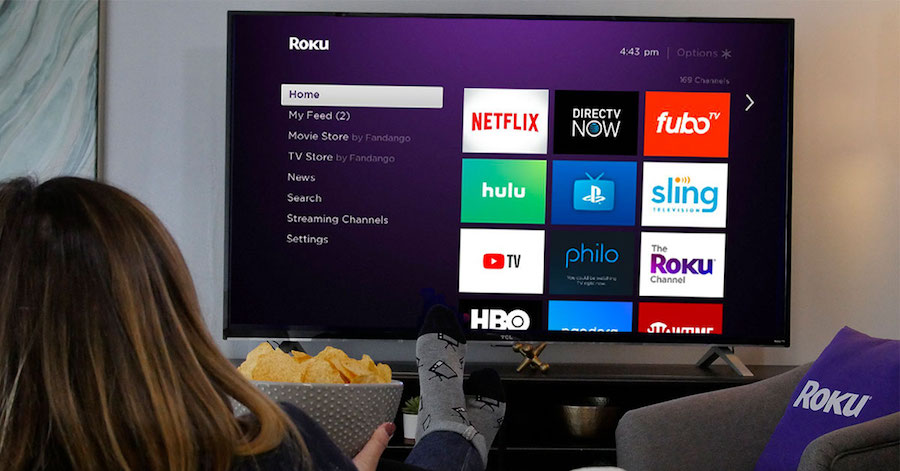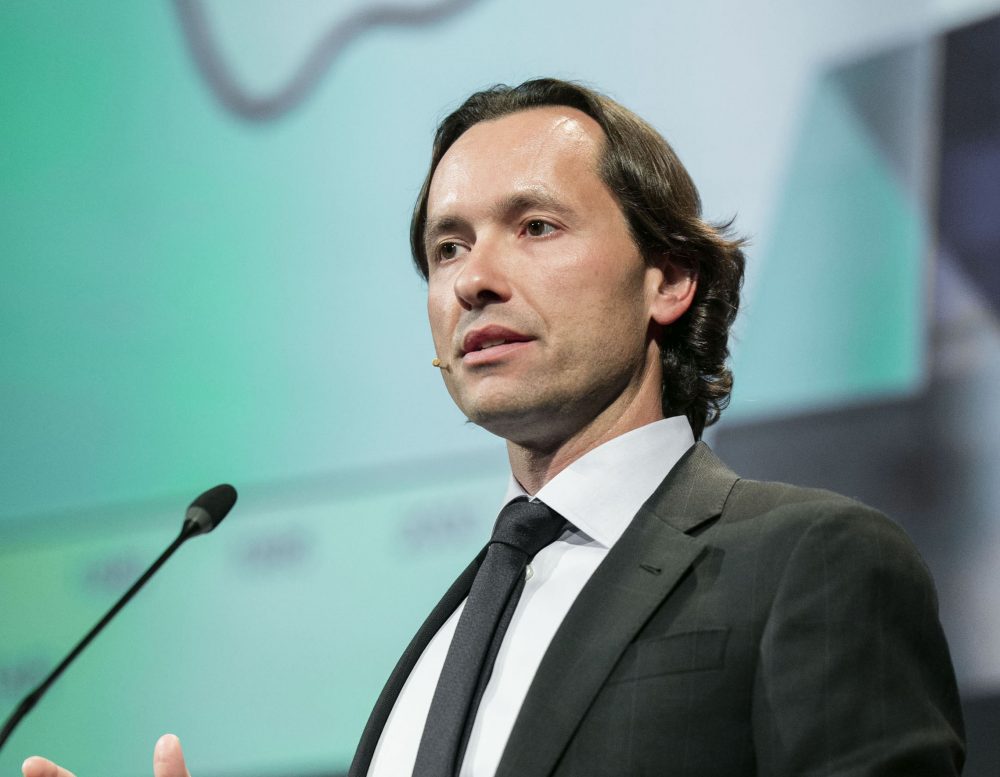
KONNOR VON EMSTER – OCTOBER 21ST, 2019 EDITOR: PARMITA DAS, AMANDA YAO
“Mommy, did TV shows really only come out once a week?”
In a few decades, this may be the question of children around the world.
Streaming entertainment caught the world by storm, just like VCRs and DVRs did when they were first introduced. Streaming Video On Demand (SVOD), as streaming is formally known, is uprooting many of cable TV’s major networks. It has spawned internet movements such as the self-proclaimed “cord cutters,” who are committed to solely using SVOD instead of cable TV. But what are the reasons behind streaming’s widespread appeal, and why has its popularity increased dramatically in recent years?
What is SVOD?
Streaming Video On Demand (SVOD), commonly known as streaming, provides content such as TV shows, movies, and sports through websites or apps. Notable examples include Netflix, Hulu, HBO Go, and Amazon Prime Video, to name a few. Streaming appeals to many because it allows users to watch wherever and whenever they want, as long as there is a stable Internet connection (although some streaming services even allow downloadable content). This represents a notable departure from cable TV, which only comes in the form of live TV and recorded content via a cable box. Another perk is that many streaming services are ad-less, and provide a lot of instant content for cheap prices. Cable averages to $107 per month, whereas Netflix, a popular streaming service, charges only $12.99 per month for their standard plan. Even Youtube TV offers cable services for $50 per month. These cost savings add up for people looking to watch TV casually, without much of a desire for particular primetime shows or sports.
The beginning: Netflix
Netflix started its life as a DVD rental company. Offering the same services as Blockbuster, it was able to cut overhead by providing its services online and by mail. In 2007, Netflix launched its next innovation by offering one of the first web platforms for SVOD. This venture into streaming has since propelled the company to stratospheric heights, allowing its valuation to be in excess of $100B. Netflix’s streaming service was modest at first, with a simple interface and few shows, but has since grown dramatically. Hulu introduced streaming shortly after in 2008, focusing more on TV shows than Netflix.
At first, both Hulu and Netflix began by licensing other networks’ content, gathering a wide variety of B-rated movies and TV shows. This type of service is often referred to as a “clearinghouse” for other networks’ content. Just as clearinghouses in finance facilitate collection and movement of securities, the streaming clearinghouses facilitate the collection of various media to entertain consumers. While networks were often hesitant to give up rights to popular content, clearinghouses capitalized on the fact that people would settle for less popular shows at a lower price. Cult classics such as “The Office” and “Friends” gained popularity, and now account for over 10% of all content watched on Netflix alone.
Departure from Cable
With the advent of Netflix, many people realized they could substitute the utility derived from cable television with that of these streaming services. While few have replaced cable entirely, Netflix’s introduction of iOS and Android apps in 2010 made the service more portable than ever, and significantly more accessible compared to cable TV. This competition is evident as cable prices have remained relatively stagnant, only rising 1% from 2017 to 2018.
The rise of Netflix was aided by technological advancements, such as improvements in Internet speeds and an explosion of mobile devices. Internet speed increases cut loading times, making streaming a more reliable source of entertainment. During that same time period, the number of mobile devices owned by Americans skyrocketed, allowing for easier use of common streaming apps. In the absence of detailed viewer data, which remains a corporate secret, Netflix’s stock prices are indicative of its success. Its stock price increase in late 2009 signaled an increase in investor confidence in the streaming business and an expansion in streaming demand as a whole.
In another large departure from tradition, Netflix transitioned to becoming a part clearinghouse and part production company. To run the clearinghouse model, Netflix had to license all of its content from third parties, which ate into its profit margins. The rights were entirely owned by the third party production firms, who could therefore price shop among different streaming services. As Netflix did not hold a patent on streaming technology, their profits were being competed away by other streaming services entering the industry. This made implementing in-house production a viable substitute for licensing content from production companies. The launch of the critically acclaimed shows “House of Cards” and “Orange is the New Black” in 2013 signaled this change, and exemplified the potential of a non-network production company.
An advantage of this approach is that it keeps people subscribed to the streaming service, even if some of their favorite shows move somewhere else. Production companies often have exclusive control over the content they create, which means if enough people are interested in it, it will differentiate their product. This type of competition, known as monopolistic competition, occurs when firms can differentiate their products from one another but there are no barriers to entering the industry or copying another business’ model. Therefore, firms can only run short term positive profits until they are competed away. This production model is differentiated from the clearinghouse model in which the services provided are relatively homogenous and therefore closer to perfect competition. Streaming services used production to their advantage, just as many cable networks do on a regular basis. Many streaming companies that began as clearinghouses took the same route Netflix did; notable cases include Amazon Prime Video with their introduction of “Transparent” in 2014 and Hulu Originals with “The Handmaid’s Tale” in 2017.
An Explosion
Over 110 different streaming services currently exist, offering sports, live TV, movies, international TV and many more options. This explosion can be explained by the very low barriers to entry around streaming. All a streaming service requires is content, either created or licensed, servers to deliver the content, and a user interface to interact with the consumer. The first mover advantage—competitive advantage for entering the industry before other firms—for companies like Netflix was very low. Every traditional TV network has the resources to create their own streaming service, and many have. These networks include big names such as Disney, NBC Universal, and Warner Bros, who all plan to create streaming services in the next few years. Disney, along with many other networks, is working to pull its content from competing streaming services, with the hope of driving customers toward its own. This move hurts the clearinghouse model that companies like Hulu and Netflix were built on, as Disney owns huge franchises such as Marvel and Star Wars. Up to 20% of Netflix’s content could be lost to those three companies’ streaming services alone, which will result in major disruptions in Netflix’s consumer base.
This has even brought very non-traditional, mega cap (>$100B in market capitalization) contenders to the market such as Amazon, Apple, and Google. Amazon, built as a mere online retailer in the early 2000s, has expanded its reach into many other fields including retail stores, devices such as their Echo line, and video streaming with a mix of clearinghouse and original content. Google, previously known exclusively for their search engine, has expanded their reach to offer a suite of web-based apps, devices, healthcare research, and of course, streaming services through Youtube Premium and Youtube TV. Apple, famous for its device ecosystem, will launch Apple TV+, its “all originals” streaming service, on November 1st of 2019, completely foregoing the clearinghouse model many services have kept in place.
Most of these new streaming services offer both clearinghouse and original content, although vastly more focused on the latter. This strategy is likely to keep customers on their site and watch their shows, as well as promote customer retention. There are also network effects that companies capitalize on, such as viewers recruiting their friends to watch the same shows, requiring these friends to also subscribe to the streaming service the shows are provided on.
In this way, there is a sort of convergent evolution of tech companies trying to capture people into their digital ecosystems. Devices, services, and streaming all join forces to capture a large segment of the market. Companies can even make it harder to stream and use content across devices, often by creating competing services. Many companies offer package deals to keep customers fully invested in the ecosystem, similar to the bundling options offered by cable and telecommunications companies.
The Future
No one knows exactly what the future holds for the streaming industry. At the moment the fragmented mix of clearinghouse and original content is confusing for companies and consumers alike. Additionally, with many traditional networks and cable companies playing catch up to match the staggering profits of streaming services, the field can be expected to change drastically in the next couple of years.
Part of the reason it is hard to predict the future of streaming is that consumers’ preferences are currently unknown. Viewers may prefer the clearinghouse approach, which would then encourage companies to cross-pollinate TV shows with one another. People may begin to subscribe to multiple streaming services, handpicking those with the hottest shows or the most content. Alternatively, consumers may find online cable most attractive. In this new era, companies will likely need to adapt quickly to consumer preferences to stay competitive, and consistently introduce new products to strip competitors of their customers.
For streaming to survive, internet speeds must also rise to keep up with data-heavy demands of streaming. Fortunately, internet service providers are already fully prepared. Speedtest.net reports in their global index that 170 out of the 176 countries measured have average speeds that meet Netflix’s Internet connection speed recommendations of 5 MB/s. Cable may become an outdated technology, such as VCR and Cathode Ray Tube Television. However, it is ultimately up to the consumer to decide what matches their needs and preferences, be it cable or SVOD.
Featured Image Source: Roku
Disclaimer: The views published in this journal are those of the individual authors or speakers and do not necessarily reflect the position or policy of Berkeley Economic Review staff, the Undergraduate Economics Association, the UC Berkeley Economics Department and faculty, or the University of California, Berkeley in general.




One thought on “The Economics Driving the Streaming Industry”